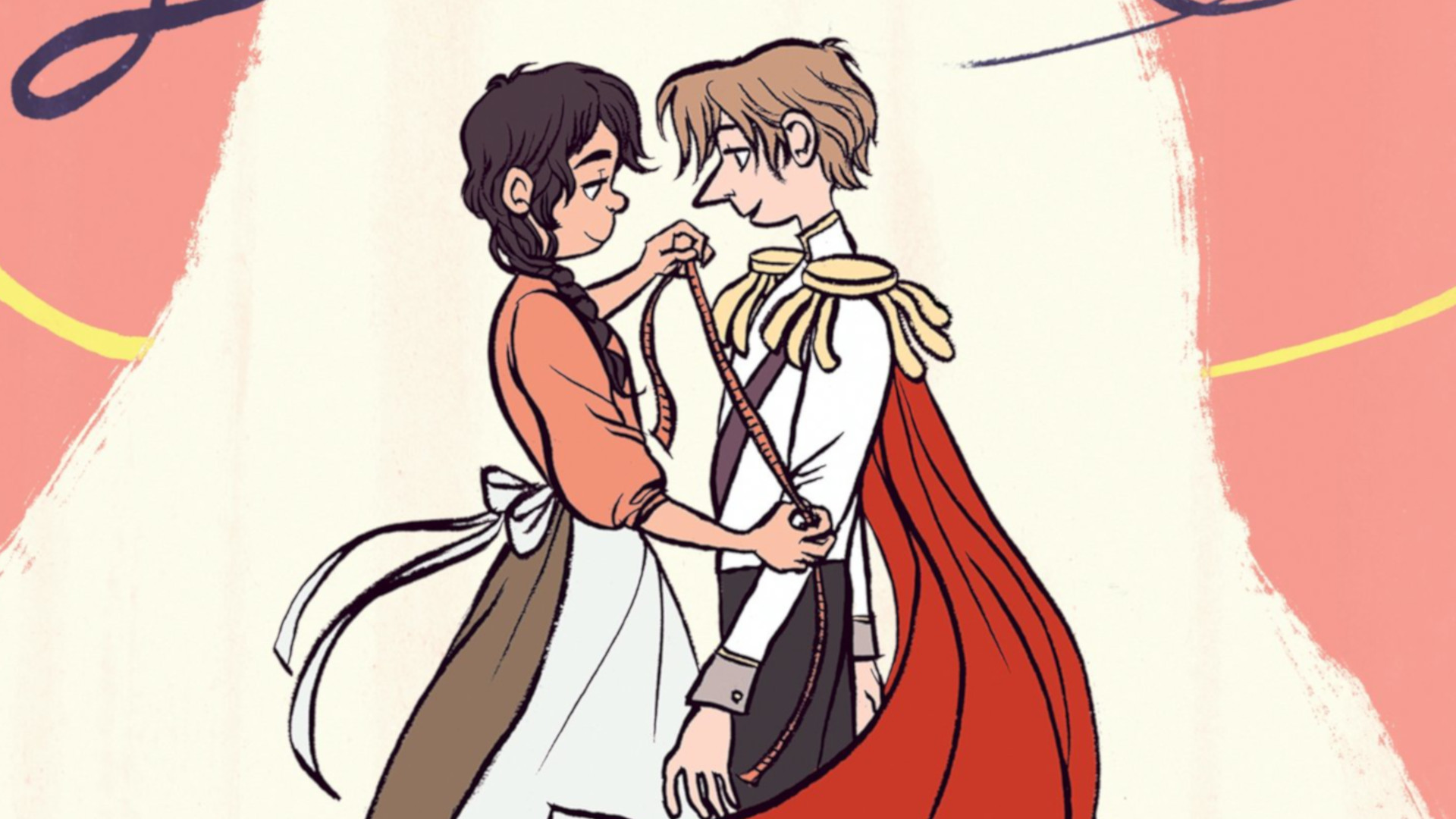One of the loveliest trends I’m seeing in LGBTQ representation in entertainment is the visibility of characters who don’t fall into clearly defined categories. Queer can mean a lot of things, and individuals can fall anywhere on the spectrum of sexuality. This is starting to be represented in books more so than in TV and movies, but it’s still a welcome trend. And it’s portrayed delicately yet straightforwardly in The Prince and the Dressmaker by Jen Wang.
This young adult graphic novel unfolds like a retelling of the classic fairy tale trope. Frances, a poor young seamstress, yearns to develop her talent for fabulous, imaginative gowns. When one of Frances’s unique designs turns heads at a society ball, Prince Sebastian locates her and convinces her to come to work for him at the palace.
That’s where Frances discovers Prince Sebastian’s deep secret: his passion for dressing up in outrageous, gorgeous gowns, and going out at night as his alter ego, Lady Crystallia. Frances doesn’t care that the Prince likes to wear women’s clothes, and as she is inspired to create ever more fantastical dresses for Lady Crystallia, the two form a partnership that turns into a deep friendship and maybe more.
But the Prince is growing weary under the weight of his parents’ expectations. His father, the King, is a macho dude who pressures his son to be more manly and especially to find a proper society girl to be his wife and continue the family legacy. And Frances is realizing that as long as she’s designing for Lady Crystallia, keeping Sebastian’s secret means she won’t be able to make a name for herself as a designer.
Reading this book, I was impressed at how the author treated the tension between Frances and Sebastian. It’s a skillful conflict because they sincerely do care about each other and want the best for themselves and each other, it’s just that their dreams are ultimately in conflict. I also appreciated that the story never requires a firm definition of Sebastian’s sexuality; it’s transgressive enough that he likes to wear women’s clothes.
I think the author leaves this open so that readers can decide for themselves if Sebastian is gay, or queer, or genderfluid; and also decide what this means for his relationship with Frances, if they remain lifelong friends or if something more develops. I’d recommend this book for any YA reader.
